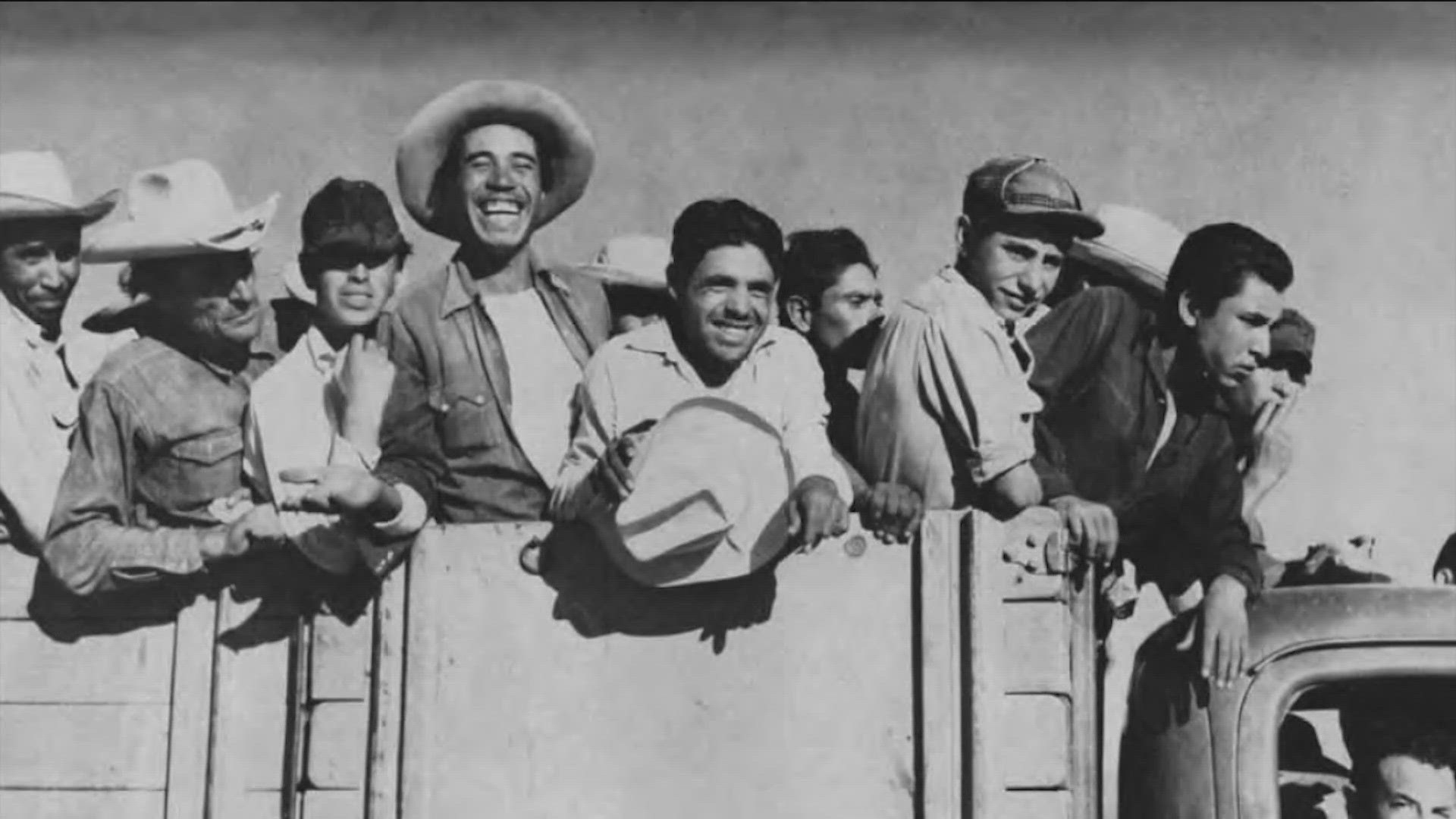AUSTIN, Texas — The history of Hispanic Latinos in Central Texas was carved in the soil of the farmlands outside Austin at the beginning of the 20th century.
Most worked as farmhands, many taking the place of Black slaves who had been freed decades before. And even though the ties between Texas and Mexico had existed for centuries, Latinos in Texas were looked down upon and often subjected to violence at the hands of white Texans.
According to historians William Carrigan and Clive Webb, from 1910 to 1919, 25,000 Hispanic people in the U.S. were murdered in a wave of terror, many by the Texas Rangers, a group that began as militia-funded and supported by white ranchers who wanted more land and who hated their Spanish-speaking neighbors.
Lynchings of Latino men and women took place on hanging trees like one that still grows outside the Goliad County Courthouse, just 130 miles from Austin. And just as Black Americans fled rural violence in Texas, Latinos, too, were drawn to the relative safety of the capital city.
Of the 23,000 people who lived in Austin in 1900, only about 500 were of Mexican heritage. In Central Texas, they helped build the railroads, tended to the crops of white farm owners and worked as cowboys, or vaqueros, on the big ranches to the south and west of the city.
But it was the Mexican Revolution of 1910 that saw Austin's Latino population swell. Millions of Mexican refugees fled the violence and crossed into Texas, before spreading out across the U.S.
By 1930, Austin's Latino population had risen to 5,000. Yet despite their numbers, discrimination did not end. Local schools for Latino children were poorly funded. The doors to political representation were locked and finding a safe place to live was difficult. Newspaper advertisements for new Austin neighborhoods like Hyde Park were filled with language that made it clear that there was no place for Latino or Black residents.
In an article in the March 1913 Bulletin of the University of Texas, William B. Hamilton wrote:
“Between Congress Avenue on the East, and Rio Grande Street on the West, Fourth Street on the North and the river on the south, is a section which may be called the Mexican District. Bordering this section of the south is the main city dumping ground. The Latinos have all the filthy habits described already, but you must add to them the worst filth of the dump.”
World War II would signal a turning point. Many thousands of Latinos from Austin and from across Texas would volunteer to fight. Some would become decorated heroes, only to return home and find themselves treated with disdain and disrespect. They had served their country just as white soldiers had and came home from the war determined to gain access to all this country has to offer.
Organizations like the League of United Latin American Citizens (LULAC) had been working to end discrimination since its founding in the 1920s and took on new importance in the postwar years. The G.I. Forum played an active role that assured better educational opportunities and increased voting rights for Latinos.
By the 1950s, the doors slowly began opening to political representation. In 1956, San Antonio native Henry B. Gonzales came to Austin to serve in the Texas Senate, becoming the first Latino to do so. But colleagues referred to him as “that Mexican" and, according to his biography, Gonzalez found himself fighting regular attempts by the Legislature to circumvent national civil rights legislation.
Austin remained a city divided in many ways, including the construction of Interstate 35, which had the effect of cutting off predominantly Hispanic and Black neighborhoods on the east side from the prosperous central business district. For many, it was both a symbolic and actual barrier. Many Latino children attended Palm School with a park and swimming pool nearby. But Latino children weren’t allowed to swim with white people.
By the 1970s, activism in Austin reached a peak with the Chicano movement, the Raza Unida political party and solidarity with striking farm workers led by Cesar Chavez, who fought to improve the working conditions of Latinos who worked in the fields. It was a time of reawakening, and, for some, social revolution was in the air.
In Austin, in the late 1970s, a predominantly Hispanic neighborhood in East Austin fought back against drag boat races in nearby Town Lake. The noise and crowds disrupted their homes every summer during a citywide event known as Aqua Fest. It was a popular celebration to many, but it was the boat races that divided the community throughout the 1970s. Neighbors pleaded with Austin City Council to ban the races.
But when it came time for the council to decide, by a vote of four to three, the races were allowed to continue. And when the boat races returned to Town Lake in 1978, fights broke out between those for and against the boat races. Eventually, the races would be moved to a location far away from East Austin.
The 1970s would also see political progress. When he was elected in 1970, Richard Moya became the first Travis County Commissioner of Hispanic descent. At the time, no Latino had ever been elected to public office in Austin government.
Gus Garcia was elected to the Austin School Board that same year. He would later become Austin's first Latino mayor in 2001. In 1975, there were more political victories. Gonzalo Barrientos was elected to the Texas Legislature and John Trevino to the Austin City Council.
From the Austin of 1900 to the Austin of today, there's a rich and vibrant history of Hispanic Latinos in our city, and stories of the vital contributions they've made to everyone's lives: stories to be remembered and stories yet to be told.

